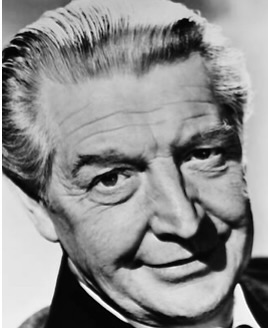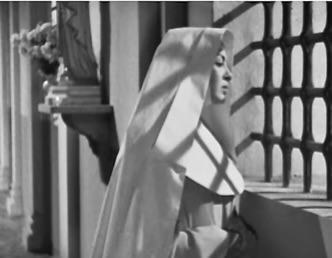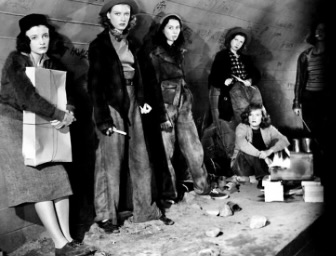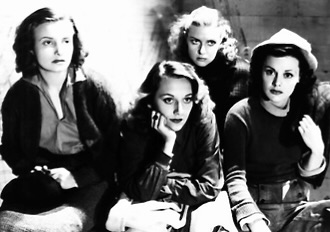TopBilled:
Heist film with first-rate performers

Not long ago the folks at Criterion selected three of Basil Dearden’s films to include in a collection that pays homage to the great British director. One of these titles is Dearden’s marvelous heist film from 1960, THE LEAGUE OF GENTLEMEN.
GENTLEMEN resonates strongly for me, though I am not exactly a fan of this sub-genre due to its often repetitive plot twists. You know, where the caper promises to be a perfect crime, but then it all falls apart and fails miserably. We’ve seen the basic scenario play out in John Huston’s THE ASPHALT JUNGLE and in Jules Dassin’s TOPKAPI.

Perhaps I enjoy Dearden’s treatment of this subject a bit more, because he manages to avoid some of the clichés, and his version wisely does not lapse into too much predictability or sentimentality. It also helps considerably that such material is placed into the hands of a distinguished set of actors who slyly punch up the more dramatic aspects of the story, which was scripted by Bryan Forbes, who happens to number among the on-screen crooks.
Besides Forbes, the cast includes several first-rate performers. Roger Livesey plays a member of the cohort nicknamed Padre; Richard Attenborough is Lexy, a womanizing associate; and Robert Coote has a funny bit as a meddling outsider who inextricably becomes involved in the criminal activity.

But it’s star Jack Hawkins who holds it all together with his smooth portrayal of an ex-colonel that masterminds the robbery with his right-hand man– I mean, major– played by Nigel Patrick.
Another great thing about this picture is the pacing. The gathering of the gang; the next sequence of stealing the guns from a government base; the heist itself at a nearby bank; and the ‘victory’ party at the end are all evenly presented. It’s a nearly two-hour movie that hums along nicely and gives us, at every turn, a sense of being pleasantly entertained. Yes, two hours of movie-watching time has been stolen from us by these gentlemen, but it is well worth the price.
***
Jlewis:

This is one of Basil Dearden’s finest films, frequently covered in the movie history books thanks to its all star cast of veterans from classic Brit cinema who, while they may not all be household names today, any old time movie buff will recognize right away if that buff has watched enough material made before the 1970s. Reportedly, Cary Grant and David Niven were also initially considered for the top role that Jack Hawkins (fresh from BEN-HUR) took on.
Based on a best selling novel by John Boland, this is your quintessential heist epic, resembling earlier classics like THE ASPHALT JUNGLE and RIFIFI as well as sharing major plot-points with SEVEN SAMURAI/THE MAGNIFICENT SEVEN and the 007 blockbuster GOLDFINGER as well. As usual with such stories, crime does not pay in the end but it is still a lot of fun watching the naughty rascals make an attempt at it.

Lieutenant-Colonel Norman Hyde (Jack Hawkins) is a bored out of his mind ex-military man who investigates the where-abouts of seven other ex military men who have fallen into despicable, yet gentlemen-ly, lifestyles and attracts them to a special dinner with half £5-notes and a paperback crime novel titled “The Golden Fleece” (a bogus book made up for the screen).
His comrades are all specialists in particular fields and are needed to help him commit the ultimate crime: first fooling an actual military training camp in Dorset into thinking they are higher ups (and, thus, stealing weapons under security’s noses) and then mastering the biggest bank robbery imaginable (possibly taking a cue from the legendary 1950 robbery of the Brink’s building of Boston). While Hyde himself has no previous criminal record, his disgust for the overall lack of financial and public recognition regarding his hard work during war and peace time is enough for him to stage his very first exploit of this kind.

A roll call of his fellow hoodlums…
-Major Peter Race (Nigel Patrick, seen earlier in SAPPHIRE)
-Captain “Padre” Mycroft (Roger Livesey who needs no introduction to Michael Powell and Emeric Pressburger fans)
-Lieutenant Edward Lexy (Richard Attenborough… yes the same Attenborough who was the older brother of everybody’s favorite animal documentary guru David and most famous for both GANDHI, as director, and two of the JURASSIC PARK films as star)
-Captain Martin Porthill (Bryan Forbes, co-writer and jointly involved with director Dearden and fellow producer Michael Relph in the Allied Film Makers production company that made this film)
-Captain Stevens (Kieron Moore)
-Major Rupert Rutland-Smith (Terence Alexander)
-Captain Frank Weaver (Norman Bird)
One curious point that I find fascinating here are the backstories each has with assorted women, such as Norman Hyde being divorced but still retaining a portrait of his ex (actually a portrait of Deborah Kerr recycled from THE LIFE AND DEATH OF COL. BLIMP, featuring co-star Livesey). There’s another leading the gigolo life and having to compete with younger beefcake with his wealthy client; yet another married with a mistress on the side; and, of course, the usual roving Romeos.

Livesey’s Mycroft poses as a prim and proper minister but hoards topless girlie magazines in his suitcases, resembling the equally risqué reading material found later at the soldiers’ barracks. When a strip-tease lady pops into a slide presentation, everybody wolf-whistles in unison.
At least one in-depth review I read online hints that one of these gentlemen might have been gay-coded due to a military “morals” dismissal but any sign of it on screen is way-way too subtle to notice. I’ll let other eagle-eyes watch this and look for the clues I am missing. When a pre-stardom Oliver Reed makes an unexpected cameo as a swishy sweater dancer-actor, it appears that these men all sport the smug, condescending look.

Such gay stereotypes first crested during the “pansy craze” of the late twenties and early thirties before the Production Code deemed them too deviant. Then they gradually starting reappearing sporadically in the later fifties with this film as a key landmark example and, by the end of the sixties through much of the seventies, were so commonplace in mass media that the newly created G.L.A.A.D. had to put the crunch on Hollywood and the TV industry in much the same way the N.A.A.C.P. had previously with the all too frequent stock “comedy” of watermelon chomping, black-face minstrel shows, dice throwing, chicken stealing and Stepin Fetchit inspired low-draws on screens.
It is rather ironic that THE LEAGUE OF GENTLEMEN makes backward steps here, considering that the same production team would very soon make VICTIM, a radically different and forward moving social commentary on equal rights for everybody regardless of sexual orientation.

Despite its flaws, this is one very hilarious Brit comedy done in the Ealing tradition with a veteran of that legendary studio, Michael Relph, taking full charge. All of the effort this team puts into their robbery resembles a full scale British military routine with Hyde’s home quarters becoming a training base complete with potato peeling as protocol. The main van is refitted with a rather professional “legit” name of “Co-operative Removal Ltd.,” which is obviously a joke on their real “removal” goals.
When curious police officers question the gentile Hyde of their exploits, he is most professional and authoritative in all of his dubious explanations and prompts them not to investigate further. As for his comrades, this major undertaking gives them a sense of purpose and companionship they have desperately needed since their wartime duties many years ago.

The actual bank scenes are beautifully staged and look rather convincing with the robbery done with smoke bombs and gas masks. I especially like the ominous shots of St. Paul’s Cathedral in the clips leading up the key climax as Hyde looks up to it as if he feels what he is doing is serving some “divine” purpose. Fittingly, St. Paul’s stayed pretty much in-tack despite all of the bombings of the war, a symbol of British resistance and viewers can make all kinds of symbolic analysis here.
Alas…what the Lord giveth, the Lord taketh away and, despite the robbery initially being a great success and these gentlemen congratulating themselves over drinks back at Hyde’s home as they open their loot, something…or somebody…will prevent them from getting away with it all. That somebody winds up being a rather innocent 8 year old boy with a hobby interest in collecting driver license numbers and discovering that one of their vehicles with a U.S. state Alabama plate that is most interesting to the authorities. This boy reminds me of another little boy who exposes all of the truth regarding Hans Christian Andersen’s Emperor’s “New” Clothes.

Yet we don’t get to the final downfall right away. In true Ealing tradition, there is a wonderful chip-chip-cheerio false alarm when an old chum of Hyde’s, Brigadier “Bunny” Warren (Robert Coote is absolutely wonderful in his bit role), temporarily crashes the gentlemen party and all worry that their scheme has been exposed too prematurely. Of course, this is all merely a delay before the final “gotcha.” As Hyde watches a grand fortune slip through his fingers as each of his party unexpectedly succumb to the police paddy wagon, he at least is happy to see Major Race address him “all present and correct, Sir” as all faithful comrades who stick together during any conflict must.
























































